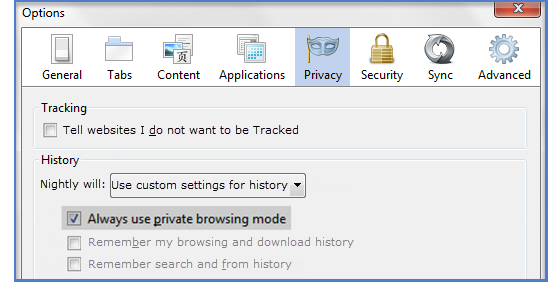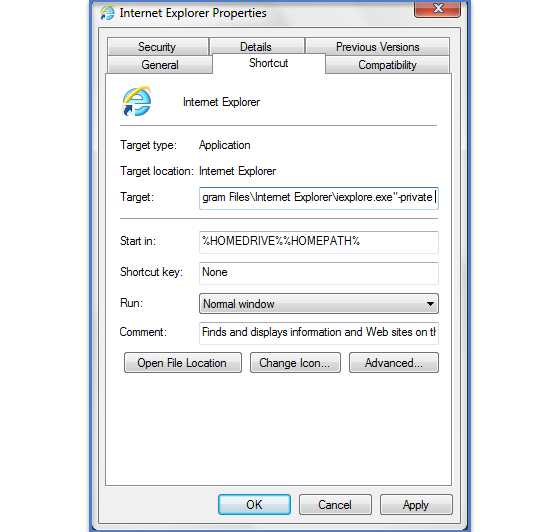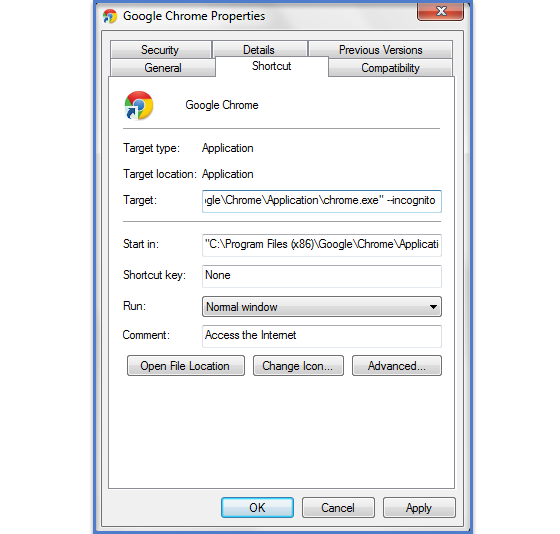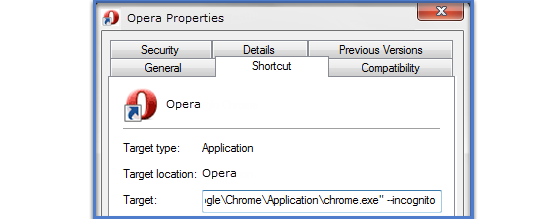
 Data Structure
Data Structure Networking
Networking RDBMS
RDBMS Operating System
Operating System Java
Java MS Excel
MS Excel iOS
iOS HTML
HTML CSS
CSS Android
Android Python
Python C Programming
C Programming C++
C++ C#
C# MongoDB
MongoDB MySQL
MySQL Javascript
Javascript PHP
PHP
- Selected Reading
- UPSC IAS Exams Notes
- Developer's Best Practices
- Questions and Answers
- Effective Resume Writing
- HR Interview Questions
- Computer Glossary
- Who is Who
Private browsing mode of the web browsers
“Private Browsing” a very useful feature of all web browsers have been used very commonly and frequently by internet lovers, such as Internet Explorer, Mozilla Firefox, Google Chrome and Opera.
“Private browsing” facilitates users to surf on Internet without leaving any traces in the computer. The browser that uses private browsing doesn’t leave the history of the websites you visit, files you download, forms you fill, your searches, etc.
The best thing about “Private browsing” is very much useful for public computer.
Private browsing feature is similar to the name of the “Incognito mode” in Google Chrome, “InPrivate” in Internet Explorer, etc.
Official Definitions of Private Browsing
Following are the official definitions of Private Browsing according to popular web browsers −
Mozilla Firefox
When Firefox is in Private Browsing mode does not save any browser history, search history, download history, web form history, cookies, or temporary internet files. Only, downloaded files and bookmarks can be saved.
Internet Explorer
Private Browsing mode of IE helps to stop saving data of the browser session includes; cookies, temporary Internet files, history, and other data. By default, Toolbars and extensions get disabled.
Google Chrome
In Private Browsing mode of Google Chrome opened page could not display in browser history or search history, traces, or cookies. Only, save downloaded files and bookmarks.
Opera
In case of using public computer, use private browsing will not maintain any trace after closing all application and software.
Keyboard Shortcuts or Menu Commands
Use the given below keyboard shortcuts or menu commands to start a web browser in private browsing mode,
For Internet Explorer, use “Ctrl+Shift+P” keys together or choose “InPrivate Browsing” from Tools menu.
For Mozilla Firefox, use “Ctrl+Shift+P” keys together or choose “Start Private Browsing” from Tools menu or orange button
For Google Chrome, use “Ctrl+Shift+N” keys together or choose “New incognito window” by Wrench icon
For Opera, use “Ctrl+Shift+N” keys together or choose “New Private Tab” from Tabs and Windows menu.
Private Browsing Mode of Different Browsers
Mozilla Firefox
Open the Mozilla Firefox and go to the Tools → Options. The Options dialog box opens.
In the opened Options dialog box, click on the “Privacy” tab.
In the “Privacy” tab, go to the History section and select “Use custom settings for history” from dropdown list of the Nightly field and also check the option “Always use private browsing mode” then click on “Apply” and “OK” to apply the changes.

Otherwise, in the about:config window mention “browser.privatebrowsing.autostart” = true.
Above mentioned method will make browser to start in private browsing mode where orange Firefox button confirms that browser is in private browsing mode. This orange Firefox button does not convert into blue, this conversion only happens by starting private browsing using hotkey or menu bar.
Internet Explorer
Right-click on Internet Explorer’s shortcut to visit the IE Properties.
When Properties dialog box opens, add “-private” with a blank space between existing string and “–private” at the end of the string present in Target text box as shown in the figure below.
Next, click on “Apply” and “OK”.

Next time, when you start Internet Explorer will start in InPrivate browsing mode.
Note: The given above method will also work with Mozilla Firefox, means; Firefox will also start in private browsing mode by given above mode.
Google Chrome
Right-click on Google Chrome’s shortcut to visit the Properties of Google Chrome, and then add “—incognito” with a blank space between existing string and –incognito at the end of the string present in Target text box as shown in the figure below.

Next, click on “Apply” and “OK”.
Next time, when you will open Google Chrome will start in incognito mode.
Note: This technique will also work in all other Chromium based browsers such as Comodo Dragon, etc.
Opera
Right-click on Opera’s shortcut to choose Opera Properties and then add “-newprivatetab” with a blank space between existing string and -newprivatetab at the end of the string present in Target text box as shown in the figure below.

Next, click on “Apply” and “OK”.
Next time, when you will start Opera, it will start with 2 tabs: one your default startup page and the other will be a new tab in private browsing mode. It happens because Opera comes with per-tab private browsing mode.
Conclusion
Use all above technique to protect your web browser from strangers and especially when you are using public computer.

